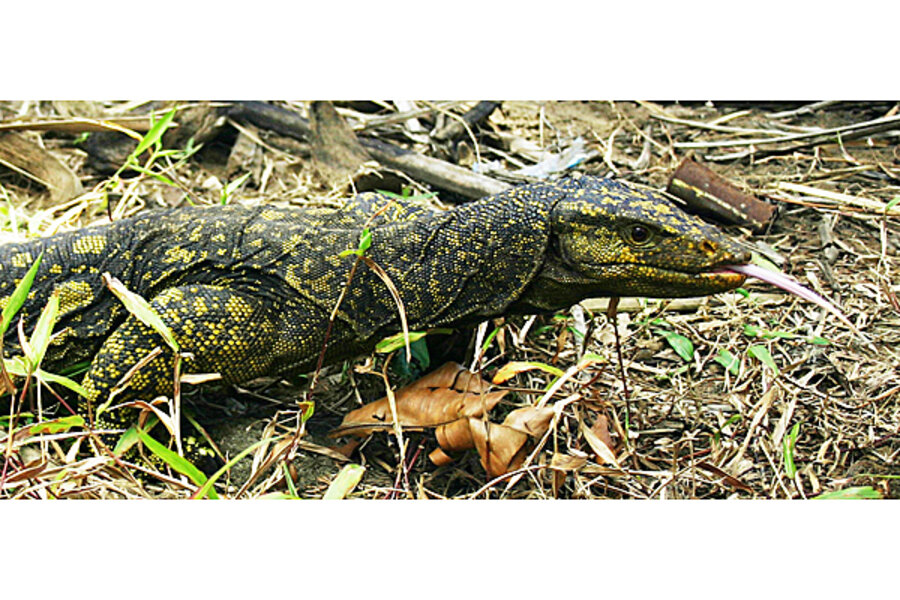Giant lizard discovery underscores threats to Philippine forests
Loading...
Researchers say a new species of giant lizard discovered in the Philippines is a reminder of the biological richness of a vanishing jungle. Rapid deforestation in the country is dimming hopes for uncovering other animals still undocumented, scientists note.
The new species was discovered last summer on the main island of Luzon, when US researchers on a field trip purchased a unique-looking lizard carcass from a Philippine hunter for a few pesos.
“The hunter had caught it accidentally in a snare for wild pigs. We saw he had it and we were able to bargain with him for it,” says Luke Welton, one of the authors of an article published today in the peer-reviewed Royal Society journal Biology Letters announcing the finding.
Welton says he and fellow researchers from the University of Kansas and the Philippine government immediately knew this lizard was unique. It had longer nostrils, a golden coloration, and an uncommonly large size. The 22-pound, 6.5-foot-long Northern Sierra Madre Forest monitor lizard (Varanus bitatawa) feasts on fruits and snails and not meat, as do most species of monitor lizard and the close related Komodo dragon.
“When I saw it, I immediately thought it was distinct,” says Mr. Welton, a graduate student at the University of Kansas who spoke today by telephone with the Monitor. “I was in the right place at the right time.”
Little known about world's diversity
Subsequent DNA testing proved the lizard to be a species new to Western science, though Welton says it was known for generations to the locals, who hunted it for meat.
“It goes to speak toward the amount of information we don’t have on global diversity,” Welton says. “We know so little.”
Mundita Lim, chief of the Philippines Department of Environment and Natural Resources Protected Areas and Wildlife Bureau, said in a statement that the discovery of "such a large, charismatic, and strikingly distinct new species of vertebrate" accentuates "the degree to which the diversity of this global conservation hotspot is still poorly known."
Rapid loss of habitat
Dr. Rafe Brown, leader of the university team that discovered the new species and curator of herpetology at the University of Kansas, said in a statement that he hopes the new discovery will focus conservation biologists and policymakers on protecting "the remaining highly imperiled forests of northern Luzon."
The new lizard faces a rapid loss of habitat as Philippine forest-cover declines at an annual rate of 2.2 percent. According to both the Asian Development Bank and World Bank, the country's forest cover fell from 35.5 percent in 1990 to 24 percent in 2005.
“While estimates of deforestation differ, forest cover in the Philippines has certainly been significantly reduced over the last forty years, due to increasing urbanization, illegal logging, and forest fires… the loss of forests and other critical habitats is also threatening the Philippines’ rich biodiversity,” the World Bank writes in its country summary.
The newly discovered monitor lizard puts the spotlight back on deforestation and the need to conserve wildlife habitat, Welton says.
“I hope we can make it a poster child for conservation,” he says. “Conserving it will trickle down to all the other inhabitants of the forest.”
Other large species have been uncovered in recent years, raising hopes that more may be lurking. The kipunji (Rungwecebus kipunji), a new genus of monkey was found in Africa in 2003, and the saola, a forest bovid (Pseudoryx nghetinhensis) was found in Vietnam in 1992.
The BBC says that in the past year alone, a giant new species of meat-eating plant was discovered; a previously unknown giant rat species was uncovered in the Philippines; and scientists captured footage of a rarely seen giant 56-foot-long fish off Mexico's coast.





